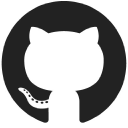How We Developed A $8.5K/Month Data Aggregation And Visualisation Tool
Hello! Who are you and what business did you start?
Hey! My name is Hugo Valente, and I’m the Product Owner+ for a startup called Statful since December of 2017. I add that “plus” playfully since anyone who has been on a small startup team knows, your responsibilities venture outside the title (managing daily operations, coordinating marketing, pre-sales, and sales among other tasks).
Statful is a customized monitoring platform to track any type of metric. It provides you with real-time data in a centralized point-of-view for business, application, and system metrics. It empowers you to instrument however and whatever you want. It is for Developers, Operations, and Business teams who want the flexibility and the power to instrument their systems in a simple way.

Without having made any real investments in marketing and sales (also not getting any external funding) we have managed...

Download the report and join our email newsletter packed with business ideas and money-making opportunities, backed by real-life case studies.

Download the report and join our email newsletter packed with business ideas and money-making opportunities, backed by real-life case studies.

Download the report and join our email newsletter packed with business ideas and money-making opportunities, backed by real-life case studies.

Download the report and join our email newsletter packed with business ideas and money-making opportunities, backed by real-life case studies.

Download the report and join our email newsletter packed with business ideas and money-making opportunities, backed by real-life case studies.

Download the report and join our email newsletter packed with business ideas and money-making opportunities, backed by real-life case studies.

Download the report and join our email newsletter packed with business ideas and money-making opportunities, backed by real-life case studies.

Download the report and join our email newsletter packed with business ideas and money-making opportunities, backed by real-life case studies.


















